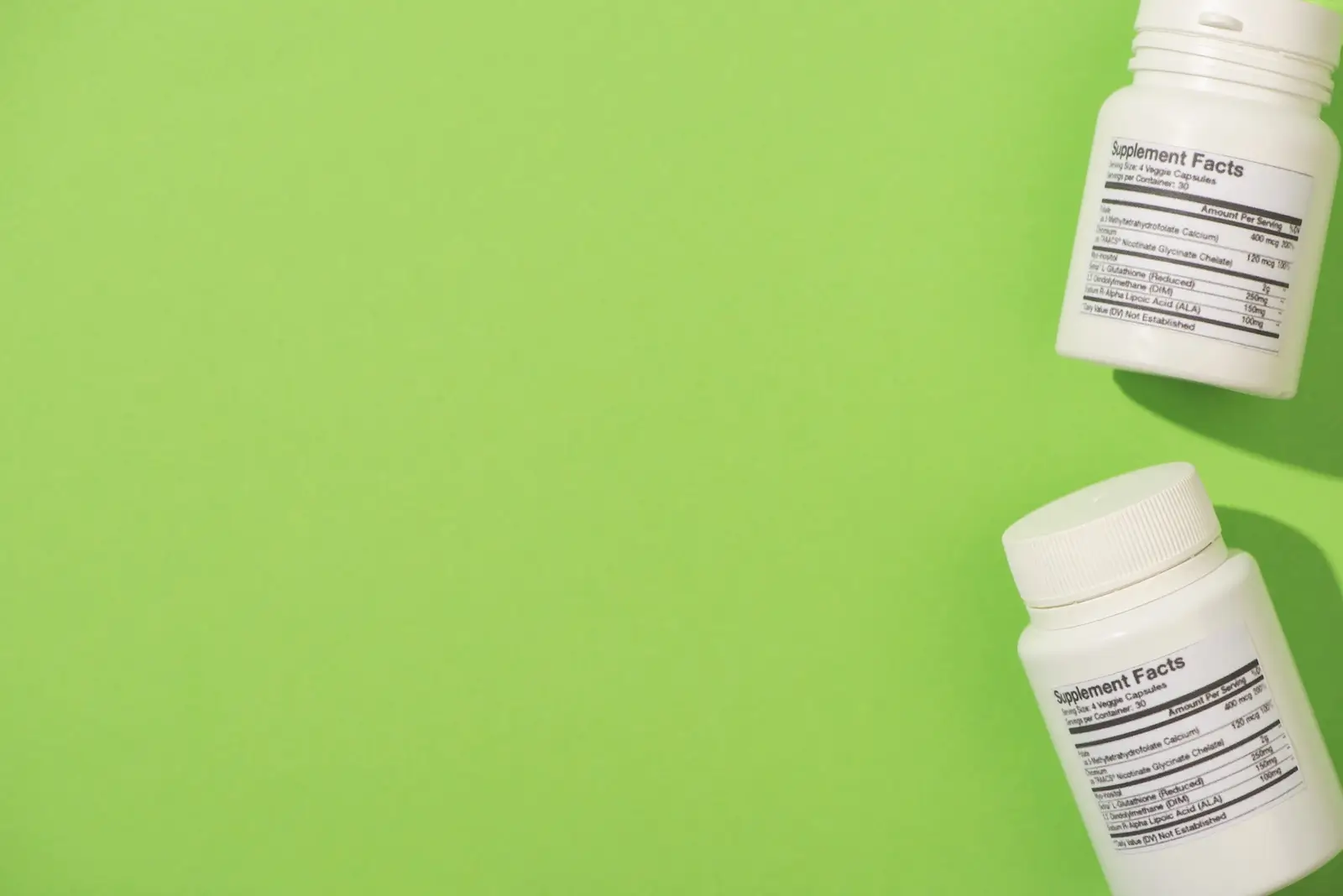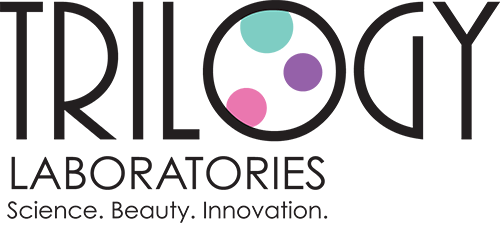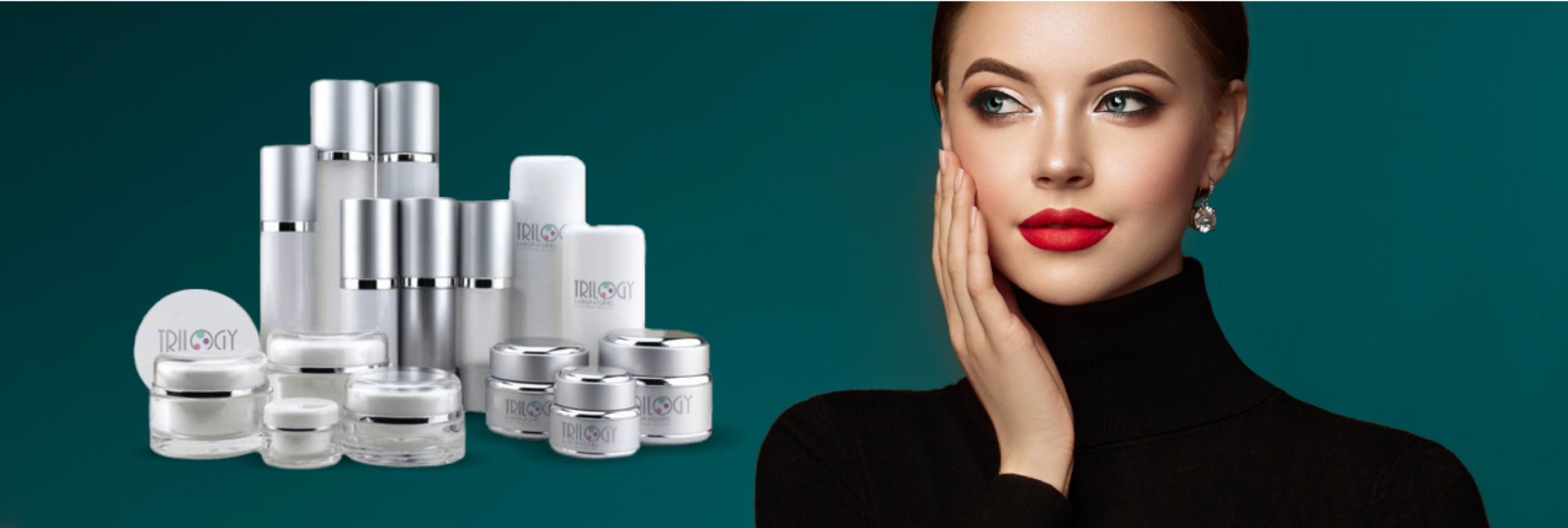If you’re starting a new skin care line or creating your own beauty brand, product labeling may not be the first thing on your mind. But it’s one of the most critical components of launching a compliant, professional, and successful product.
Why? Because proper labeling not only communicates your brand identity but also ensures you’re legally prepared to sell your products in the United States.
What Is a Skin Care Product Label?
A product label includes any wording, graphics, or printed information that appears on the outer packaging or container of a cosmetic or skin care product. It can also include leaflets, inserts, and promotional materials that accompany the product.
Your label is your first line of communication with your customer. It’s how you tell them what the product is, how to use it, and who made it.
Why Product Labeling Matters
Labeling your skin care product correctly is about much more than compliance. The label plays a crucial role in the legal, functional, and emotional aspects of marketing your product. An effective product label helps you stand out in a competitive market while also protecting your business from potential legal issues.
Legal Compliance
Accurate and compliant labeling ensures that your products meet the regulatory requirements set by United States authorities. It protects your brand from enforcement actions like product recalls, import refusals, or removal from store shelves. Non-compliant products can be considered “misbranded,” which can damage your business reputation and bottom line.
Ensuring your labels meet all federal and state laws is essential for long-term success.
Brand Identity
A well-designed label is one of the most powerful ways to communicate your brand’s message, values, and positioning. It reflects your aesthetic and ethos—like if you’re eco-conscious, science-driven, or luxury-focused. Through typography, color schemes, and layout, you build an emotional connection with consumers that fosters brand recognition. This branding element is especially important in the beauty industry, where visual appeal is a major purchase driver.
Consumer Safety
Transparent labeling builds trust and loyalty among your customer base.
Your label serves as a guide for safe product use, helping consumers understand how to apply the product correctly and what to avoid. It should include usage instructions, expiration dates, and any necessary cautionary statements. Labels also alert consumers to potential allergens or ingredients they may want to avoid.
Marketing & Differentiation
Your label is often the first impression a consumer has of your product. Including claims such as “vegan,” “cruelty-free,” or “dermatologist-tested” can influence purchase decisions and set your product apart from the competition.
Strategic use of callouts and graphics can highlight product benefits and create a unique selling proposition. An attractive, informative label can drive shelf appeal and increase sales conversions.
Who Regulates Skin Care Product Labels in the US?
Several federal laws govern cosmetic labeling in the United States, each playing a critical role in ensuring consumer safety, market fairness, and accurate representation of products. Additional legislation may also apply depending on your business model, product type, or distribution strategy.
It’s important for brand owners to be familiar with these regulations to avoid missteps that could delay or block their product launch.
Federal Food, Drug, and Cosmetic (FD&C) Act
Administered by the United States Food and Drug Administration (FDA), the FD&C Act is the cornerstone of cosmetic regulation in the US. It prohibits the marketing of adulterated or misbranded cosmetics and defines what qualifies as a cosmetic product.
The FD&C Act requires truthful labeling and gives the FDA authority to take enforcement actions, including seizures and injunctions, if a product fails to comply.
Modernization of Cosmetics Regulation Act (MoCRA)
Passed in 2022, the MoCRA updates and strengthens the FDA’s oversight of cosmetic products. It introduces new requirements such as facility registration, product listing, mandatory adverse event reporting, and safety substantiation. For entrepreneurs and indie brands, MoCRA also increases the importance of proper documentation and compliance.
Fair Packaging and Labeling (FP&L) Act
The FP&L Act is designed to help consumers make informed purchasing decisions by ensuring that product labels are honest and transparent. It requires clear labeling of product identity, net quantity, and manufacturer information. This legislation is enforced by both the FDA and the Federal Trade Commission (FTC), which monitors both accuracy and fairness in advertising.
Other Relevant Legislation
These laws are further codified in Title 21 of the Code of Federal Regulations (21 CFR), particularly parts 700 to 740 for cosmetics. In addition, products containing color additives must comply with parts 73, 74, 81, and 82 of 21 CFR.
Depending on your product’s claims, ingredients, or international presence, other laws like the Poison Prevention Packaging Act or state-level regulations may also apply.
What Counts as a “Cosmetic” Product Under the FD&C Act?
Understanding how your product is classified under US law is the first step to compliant labeling.
According to the FD&C Act, a cosmetic is defined as any product intended to be applied to the human body for cleansing, beautifying, promoting attractiveness, or altering appearance—provided it does not affect the body’s structure or functions.
The following are examples of products that qualify as cosmetics:
- Lotions and creams: These products are typically used to moisturize or smooth the skin, often marketed for the face, hands, or body. They may contain botanical extracts, emollients, and fragrances that improve the feel and appearance of skin.
- Lipsticks and makeup: This category can include lip balms, foundations, blushes, eyeliners, and other decorative cosmetics used to enhance facial features. Their primary function is aesthetic rather than therapeutic.
- Perfumes: Products designed to impart scent to the body, whether in spray, roll-on, or oil form, fall under cosmetic regulation if they make no therapeutic claims.
- Shampoos and hair coloring: These products clean or alter the appearance of hair. As long as they do not claim to prevent hair loss or treat scalp conditions, they remain classified as cosmetics.
- Toothpastes and deodorants: Toothpastes that do not make claims such as cavity prevention are considered cosmetics. Similarly, deodorants (not antiperspirants) are regulated as cosmetics if they simply control odor without altering bodily function.
Some products serve both cosmetic and therapeutic (drug) purposes and are regulated differently. For example, sunscreens and anti-acne treatments are considered both cosmetics and drugs. These products must comply with drug regulations, including specific testing, and FDA registration. Brands that offer such products must be particularly careful to meet all applicable requirements for both categories.
7 Essential Skin Care Label Requirements

Labeling your skin care products correctly requires more than listing a few ingredients. It also involves meeting specific federal criteria to ensure transparency, accuracy, and compliance. These rules help inform consumers and establish trust, all while protecting your business from regulatory issues.
Here are the mandatory components your cosmetic product labels must include, along with labeling standards that dictate how information should be displayed.
1. Identity of the Product
The identity of the product describes what the product is and should appear prominently on the front panel. For instance, a product could be labeled as a “facial moisturizer,” “toner,” or
eye cream.” This designation must be clear so consumers immediately understand the product’s purpose.
Mislabeling this section can lead to confusion or regulatory penalties.
2. Net Contents
The net contents indicate the amount of product contained within the packaging, expressed in weight, volume, or numerical count. It must be displayed on the principal display panel in both US customary units (e.g., fl oz) and metric units (e.g., mL or g). The declaration must be accurate and formatted consistently to avoid misleading consumers.
False net content declarations can be considered deceptive and subject to enforcement actions.
3. Ingredient Declaration
The ingredient declaration lists all ingredients in descending order of predominance. Ingredients must use their International Nomenclature of Cosmetic Ingredients (INCI) names and be printed clearly and legibly.
Transparency is key here—failing to declare all components, including colorants and fragrances, can result in the product being considered misbranded. This section of the skin care product label is essential for consumer safety, especially for individuals with allergies.
4. Warnings & Directions
If any cautionary language is required for safe use of the product, it must appear on the label. This type of warning may include statements like “For external use only” or “Avoid contact with eyes.”
Directions for use should also be included to ensure consumers apply the product correctly. These instructions not only protect the user but also reduce your liability as a brand owner.
5. Manufacturer or Distributor Information
Your label must list the name and address of the manufacturer, packer, or distributor. This information should be accompanied by a website or phone number when possible to enhance traceability.
The inclusion of this contact information is an important part of accountability and consumer communication. Businesses must ensure this information is accurate and up to date.
6. Legibility & Language
All required label content must be printed in English unless the product is distributed solely in a non-English-speaking US territory. The type must be legible and appear in a color that contrasts adequately with the background. Font size should be large enough to be readable by consumers at a glance. Illegible labels can render a product misbranded.
7. Visibility & Placement
Mandatory information must be placed on the principal display panel (PDP) or information panel in a manner that is easily visible to consumers. It should not be obscured by other graphics or packaging components.
Proper placement ensures that consumers can access essential details quickly and effortlessly. Inadequate placement can result in enforcement actions by the FDA or other authorities.
What You Cannot Do on a Skin Care Product Label: Skin Care Product Labeling Mistakes to Avoid
Labeling mistakes can lead to serious legal and financial consequences. To protect your brand and ensure compliance, it’s critical to avoid common pitfalls that may mislead consumers or violate federal guidelines.
Mistake #1: Making Misleading Claims
You cannot claim that your cosmetic product can treat, cure, or prevent a disease unless it has been approved by the FDA as a drug. These claims can include using terms like “heals acne” or “treats eczema.” Making such claims without proper drug classification can result in your product being reclassified and subjected to additional regulatory scrutiny.
In general, any marketing language on your label must be backed by reliable evidence. Claims such as “clinically proven” or “dermatologist-recommended” must be verifiable and not used to mislead customers.
Mistake #2: Highlighting Specific Ingredients in Product Names
While you must list ingredients on the label, avoid using the name of a single ingredient in the product title if it implies exclusivity or misleads consumers. For instance, calling your product “vitamin C serum” when it contains several active ingredients may be deemed deceptive. This name could mislead customers about the product’s formulation and lead to regulatory issues. Something like Daily Serum with Vitamin C would be appropriate.
Mistake #3: Sharing Implied Therapeutic Benefits
Avoid language that suggests your product influences bodily functions or structure, such as “rebuilds collagen” or “boosts immune response.” These claims go beyond the legal definition of a cosmetic and may classify your product as a drug. Instead you can use wording such as “improves the appearance of wrinkles.”
Mistake #4: Using Noncompliant Font Size or Placement
Important information must not be in fonts that are too small or placed where it is hard to read. Burying mandatory details in decorative elements or hard-to-see sections of the label is a violation of labeling standards.
5 Considerations for Effective Skin Care Label Design

Designing a cosmetic label involves more than compliance; it’s about creating a visual identity that resonates with your target audience and supports your brand’s growth.
Your design choices should be intentional, from typography to layout, with each element contributing to a cohesive story. Here’s what to focus on to make your product label visually effective and compelling.
1. Color Psychology
The colors you choose can have a significant psychological impact on how consumers perceive your product.
Warm tones may evoke energy and excitement, while cool tones often signal calmness and cleanliness. For example, green often communicates natural or organic qualities, while gold may signify luxury.
It’s important to use colors that reflect your brand’s values and the product’s intended purpose. Consistent use of a color palette also strengthens brand recognition across product lines.
2. Typography
Font choice communicates mood and professionalism, and it must be both stylish and readable. Script fonts can appear elegant but should be used sparingly to avoid legibility issues. Sans-serif fonts are often a safe, clean option for conveying modernity and clarity. The hierarchy of text—such as bold headers and smaller body text—should direct the reader naturally through the label’s content.
A thoughtful balance of typefaces can create visual interest while maintaining readability.
3. Visual Hierarchy
Organizing content by importance ensures that consumers quickly identify essential information. Key elements like the product name, benefits, and usage instructions should stand out clearly. Use size, boldness, and positioning strategically to draw attention to these elements. Avoid clutter by limiting how many focal points compete for the consumer’s eye. A clear hierarchy not only aids user comprehension but also enhances visual appeal.
4. Storytelling
A compelling label can convey your brand’s narrative, offering consumers a reason to connect emotionally with your product.
This strategy can be achieved through visuals, descriptive text, or even taglines that encapsulate your brand’s mission. Whether you’re promoting eco-friendliness or advanced skin care science, your label should reflect that promise.
Storytelling adds depth and personality, helping consumers feel part of a bigger purpose. When executed well, it turns first-time buyers into loyal fans.
5. Uniqueness
Your packaging should stand out on a crowded shelf and capture attention instantly. This coveted uniqueness can be achieved through innovative label shapes, materials, or finishes that distinguish your product. Custom die-cuts, embossed elements, or textured labels can create a tactile experience that engages consumers further.
Creativity, when paired with strategic intent, sets your product apart from mass-market alternatives. Unique designs reinforce brand differentiation and memorability.
How to Label Skin Care Products: 7 Tips to Follow
Navigating the cosmetic labeling process can be complex, especially for emerging brands. To ensure success, keep these practical tips in mind as you design and finalize your labels. These guidelines go beyond compliance to help you optimize durability, aesthetics, and consumer appeal.
1. Follow All FDA Guidelines
Make sure every element on your label complies with FDA regulations and associated acts like MoCRA and the FP&L Act. Refer to official guidance documents and cross-check each product’s claims, ingredient lists, and formatting.
Complying with federal and state laws helps you avoid costly fines and legal issues. If you’re ever unsure, consult a regulatory expert or partner with an experienced manufacturer like Trilogy Laboratories.
2. Use Durable Materials
Cosmetic products are frequently exposed to moisture, oils, and repeated handling. Using waterproof, oil-resistant label materials like vinyl or plastic ensures that your branding remains intact over time.
Durable labels also resist smudging and fading, which preserves a professional appearance. In other words, investing in the right materials protects both aesthetics and consumer trust.
3. Consider Label Shapes & Sizes
The label should fit the product packaging without warping, peeling, or covering essential information. If your container is cylindrical, square, or uniquely shaped, tailor your label design accordingly.
A well-fitted label enhances the product’s shelf presence and user experience. Irregular shapes can add a creative edge, but be sure they still support legibility and compliance.
4. Highlight Key Features
Callouts like “vegan,” “organic,” or “dermatologist-tested” appeal to specific consumer values and increase product desirability. These callouts can be emphasized with icons, borders, or bold text. Properly executed, they become powerful tools in consumer decision-making.
But make sure you have the documentation to support and verify these claims. False advertising can lead to serious consequences.
5. Use Premium Finishes
Enhanced printing techniques can elevate your label from standard to standout. Embossing adds texture, foil stamping adds shine, and matte coatings create a sleek, modern feel. These features suggest quality and luxury, reinforcing your brand positioning. Choose finishes that align with your budget and brand image without compromising compliance.
6. Stick with the Right Adhesive
The wrong adhesive can result in peeling, bubbling, or label displacement, especially in humid or oily environments. Select adhesives designed for the materials and surface curvature of your container.
Test different adhesives to ensure durability during storage, shipping, and use. A reliable adhesive ensures that your label looks great from shelf to sink.
7. Create Visual Cohesion
Aligning your label design with the color of the product inside can create a cohesive and visually appealing package. This tactic helps consumers immediately associate the product’s appearance with its function or ingredients. For example, a cucumber-infused gel might pair well with a soft green label. Visual harmony enhances perceived quality and encourages repeat purchases.
Partner with Trilogy Laboratories for Stress-Free Skin Care Product Labeling
Navigating cosmetic labeling requirements and design can be complex—but you don’t have to go at it alone. Whether you’re launching a new skin care line or scaling your existing beauty brand, Trilogy Laboratories offers end-to-end support that simplifies the process and ensures compliance at every step. From regulatory requirements to creative execution, we provide solutions tailored to your needs so your product is ready to impress on shelves and online.
Private Labeling
If you’re looking for a quick and efficient route to market, our private label skin care is the ideal solution. You’ll receive your skin care products fully labeled and ready to sell, complete with your unique branding, full ingredient listing, usage instructions, and business contact details. We also offer the option to include your website on the packaging to help customers easily reorder.
Our design team will incorporate your logo, color palette, and brand identity into professionally designed labels that reflect your vision.
Custom Manufacturing
For those who want more control over product formulation and presentation, our custom manufacturing services offer flexibility and innovation. Collaborate with our in-house graphic designers—or bring your own—to create labels that represent your brand’s unique personality.
From formulation and packaging to compliance and label design, Trilogy manages every stage of production, so you don’t have to juggle multiple vendors or worry about the finer details of compliance.
We’re the Labeling Experts
No matter which path you choose—private label or custom manufacturing—you can count on Trilogy Laboratories to handle the labeling process from start to finish. We specialize in seamlessly integrating your brand identity into compliant, beautiful labels that reflect your business and appeal to your target customers.
Skin Care Labeling FAQs
If you’re launching your own line of skin care products or growing your beauty brand, navigating product labeling requirements can raise a lot of questions. Here are answers to some of the most common concerns regarding US regulations, labeling best practices, and selling skin care products legally.
What Are the FDA Requirements for Product Labeling?
The FDA requires cosmetic product labels to include the following information:
- The identity of the product (e.g., facial cleanser, body lotion)
- The net contents (e.g., 4 fl oz / 118 mL)
- A full ingredient declaration, listed in descending order of predominance
- Any necessary warnings or usage instructions
- The name and address of the manufacturer, packer, or distributor
The label must be clear, legible, in English (unless sold only in a non-English-speaking region), and properly placed on the packaging so it’s easy for consumers to read. Failure to meet these requirements can result in your product being classified as “misbranded.”
Do Skin Care Products Need FDA Approval?
Generally, skin care products that fall under the category of cosmetics do not require FDA approval before being sold. However, the FDA does regulate cosmetics under the Federal Food, Drug, and Cosmetic (FD&C) Act to ensure they are safe for use and properly labeled. If your skin care product makes therapeutic claims—such as treating acne or reducing wrinkles—it may be classified as a drug and require FDA approval and compliance with drug regulations.
Do You Have to List All Ingredients in Skin Care?
Yes, all ingredients in a skin care or cosmetic product must be listed on the label using their proper International Nomenclature of Cosmetic Ingredients (INCI) names. The ingredients should appear in descending order of concentration, with exceptions for ingredients present at concentrations less than 1%, which may appear in any order after those above 1%. Fragrance and flavor components may be listed collectively as “fragrance” or “flavor.” Omitting ingredients can result in regulatory penalties and damage to consumer trust.
Can You Sell Skin Care Products Without a License?
In most states, you do not need a specific license from the FDA to sell skin care products. However, you are responsible for ensuring that your products are safe, properly labeled, and manufactured in a sanitary environment. Depending on your location, you may need a business license, sales tax permit, or registration with your state’s health department. It’s important to check with local and state authorities to determine which licenses or permits are required in your area.
What Happens If My Product Is Misbranded?
If your label fails to meet FDA requirements, your product may be considered “misbranded.” This situation can lead to enforcement actions such as warning letters, product recalls, import refusals, or even injunctions. Retailers and e-commerce platforms may also refuse to carry misbranded products, which can hinder your brand’s growth. It’s critical to ensure compliance before your product reaches the market.
Can I Say My Product Is “Organic” or “Natural” on the Label?
Claims like “organic” or “natural” are not specifically defined by the FDA for cosmetics. However, if you’re labeling a product as “organic,” it must comply with USDA organic standards and may require certification. For “natural” claims, you should have documentation to back up your use of the term and avoid misleading language. Misuse of these terms can result in FTC scrutiny for deceptive marketing.
Do I Need to Register My Skin Care Brand or Facility with the FDA?
Under the Modernization of Cosmetics Regulation Act (MoCRA), manufacturers and processors of cosmetic products sold in the US are required to register their facilities with the FDA and submit product listings. This new requirement enhances supply chain transparency and allows the FDA to monitor product safety more effectively. The registration requirement applies to most brands that manufacture or process their own cosmetics.
How Can Trilogy Laboratories Help with Product Labeling?
Trilogy Laboratories offers turnkey solutions for skin care entrepreneurs and beauty brands. Whether you’re choosing our private label line or going the custom manufacturing route, we manage everything from product formulation to label design and printing. We ensure your product labels meet FDA requirements and reflect your brand identity so you can go to market with confidence.
Build Your Skin Care Line at Trilogy Laboratories
Are you ready to build your skin care brand or expand your line of beauty products? Skip the messy at-home chemistry and let us formulate, manufacture, and label your skin care products in our one-stop-shop.
At Trilogy Laboratories, our experienced project consultants are ready to guide you through the process of branding high-quality products that align with your company’s vision. We offer a beautiful selection of packaging, low minimum order quantities, and customizable formulas made with natural and scientifically advanced ingredients—all so you can wow your users, develop a loyal customer base, and grow your beauty brand.
Private label skin care doesn’t get any better than this.
Contact us today or call 239.939.5454 to get started with your skin care line. Let us take labeling off your to-do list so you can focus on building your brand.
Posted in Professional Skin Care



